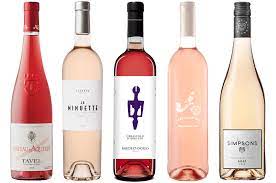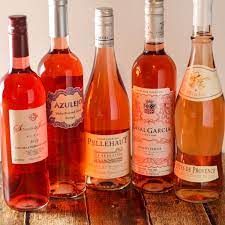“Rosé shouldn’t be limited to the summer; it’s just a light version of red wine,” says master sommelier Laura Maniec, owner of Corkbuzz restaurants. “Red wine gets its color from fermenting white juice with red-skinned grapes until you get a red color, and rosé is fermented the same way but for a shorter period of time.”

And it goes with everything from fish or cured meats and cheese to Asian food or Thanksgiving dinner, says Jessica Norris, director of beverage and wine education at Del Frisco’s Grille.
But like all wine, rosé runs the gamut from two-buck-chuck to hundred-plus-dollar bottles from Provence. Here are five sommelier tips to help you choose a rosé that’ll please your pallet and your wallet.
Dry or sweet?
If you have a sweeter palate, a bone-dry Provençal may not suit, so make sure to check if your wine selection is dry, medium-dry or sweet. Cheaper rosé can tend to be much sweeter like a confectioned fruit bomb. The secret is the alcohol by volume, or ABV, on the label. Anything higher than 11 per cent will be dry. If you like sweet wines, the lower the alcohol, the sweeter the rosé. Old-world regions (Italy, Spain, France) tend to be crisp and tart compared to new-world regions (U.S., South America, Australia), which are typically fruitier and sweeter.
https://playswellwithbutter.com/rose-101-guide-rose-wine/
Pairing with food
Rosé wine is very food-friendly – think pink for food pairings with shellfish, fish or cured meats and cheese as well as Asian food or even Christmas dinner. Anything involving tomato-based Mediterranean dishes is also great, and, of course, the ultimate Provençal fish soup: bouillabaisse.”
“Any red wine grape can be made into a rosé wine,” Maniec explains. And the main base of the rosé will be most prominent in the flavors. So pinot noir rosé usually has tart red fruit flavors like cherries and strawberries while cabernet-based rosé will have more black fruit aromas like blackberries and black plums, she says.
Rosé gets its distinct pink color through a production process known as maceration, the most common way to make pink wine. Red grapes are juiced and left to soak (macerate) with their skins for a day or two until the juice turns a subtle pink color. The grape skins are then removed and the juice continues to ferment. The wine will get darker the longer the rosé is left to macerate with the skins. This is why rosé wines can range in color from pale blush to bright pink. Rosé is not the same as a blush wine, which is a combination of red and white wine.

Rosé wine blends are made from a combination of different grape varietals. Some rosé wines lean more heavily on specific grapes, which create subdivisions, or different “types” or “styles,” of rosé. Each type of rosé wine has a slightly different flavor profile depending on the grapes used.
- Sangiovese rosé is generally an Italian wine, and is fruity but dry. Notes of fresh strawberries, green melon, and roses hit the palate with an acidic finish.
- Tempranillo rosé is often a Spanish variety and is savory, dry, and has a fruity, yet meaty flavor profile.
- Syrah rosé is a bold, dry wine with notes of olive and cherry. It does not need to be served as cold as most rosé wines.
- Cabernet Sauvignon rosé is savory, dry, and tastes much more like red wine than most other rosé wines. It is more acidic than regular cabernet sauvignon with notes of bell pepper, black currant, and spice.
- White Zinfandel is a type of sweet rosé with moderately high acidity levels. Flavor notes of white zinfandel are lemon, melon, and strawberry.
- Tavel rosé is robust, savory, rich, and very dry. Tavel has distinct fruit notes, but with an earthier and nuttier twist.
- Provence rosé is the most versatile and classic of rosé wines. This fruity and light wine pairs well with any cuisine and has notes of strawberry and rose petal.
- Mourvèdre rosé is a full-bodied rosé with initial floral notes that transform on the palate into a rich cherry, smoky, and meaty flavor.
- Pinot Noir rosé is a delicate and crisp rosé with notes of apple, strawberry, and melon. Learn about the pinot noir grape and wine.
- Rosé Champagne, or sparkling rosé, is Champagne blended with red wine. Rosé Champagne is stronger and more powerful in flavor than traditional Champagne. Champagne is the only region where it is legal to blend white and red wines together to create rosé.
